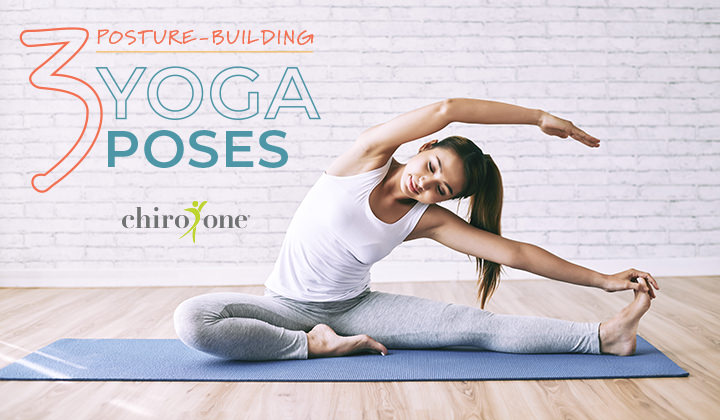
3 Posture-Building Yoga Poses
Hoping to improve your posture? Support your chiropractic adjustments with these three simple posture-building yoga poses to build strength, and improve your posture and flexibility.
The practice of yoga has been around for centuries and its mind-body-soul benefits are numerous. But did you know that yoga is an ideal compliment to chiropractic care? Dr. Katie O’Connor, Chiropractic Director of Chiro One Wellness Center of Palos Heights and a Yoga Alliance certified instructor, spoke with us about the inherent benefits yoga offers, especially in combination with chiropractic.
“What makes yoga uniquely like chiropractic is its focus on developing your body’s balance,” says Dr. Katie. “In the same way that chiropractic works to bring your body in balance, so does yoga.”
This shared focus is what makes yoga a great practice for most people under care, as mindful yoga practice can reinforce therapies and adjustments. Dr. Katie also points out that people already doing yoga may develop better balance and stronger postures by adding chiropractic care to their wellness routine.

One of the reasons why yoga is so helpful in improving balance is its contribution to proprioception, or your ability to sense where your body is in space. For example, close your eyes and try to touch your finger to your nose. Seems easy, right? But without good proprioception, you may just poke yourself in the eye!
Yoga is one of the few exercises done on bare feet, where the majority of the body’s balance centers are located. That means, the more time you spend moving around barefoot, the better your body awareness and, in turn, balance.
“The benefits of yoga are pretty amazing,” says Dr. Katie. “From physical strength to mental clarity to an overall feeling of positive energy.”
Physical benefits can include:
Mental and emotional benefits can include:
Spiritually, yoga can offer:
So, how should you get started with yoga? Dr. Katie stresses the importance of starting at the beginning. Each of the postures is designed to promote balance and strength. Done incorrectly, like anything else, you may be at risk for injury.
Another distinction Dr. Katie makes is the difference between stability and flexibility. She recommends finding a studio or class that emphasizes stability first. Flexibility will come naturally, but skipping that essential foundation of stability can also result in injury.
“Anyone with back problems should ask their chiropractor which postures they should do and if any should be avoided,” she adds.
Subscribe and get news, articles & offers sent right to your inbox each month.
"*" indicates required fields
By subscribing you are agreeing to the Terms and Conditions and Privacy Policy.